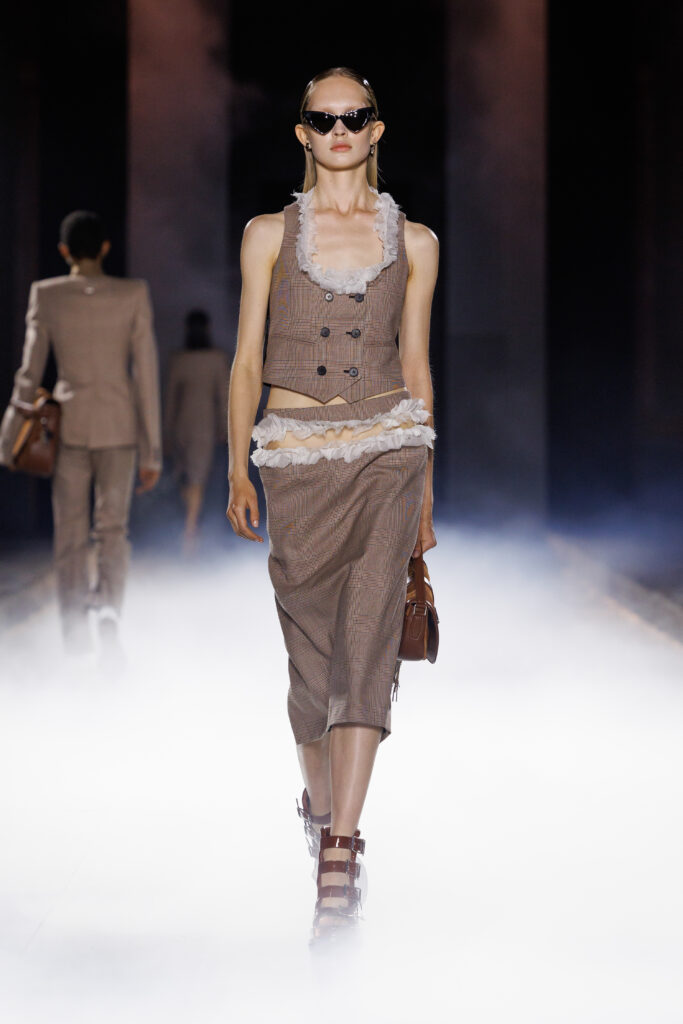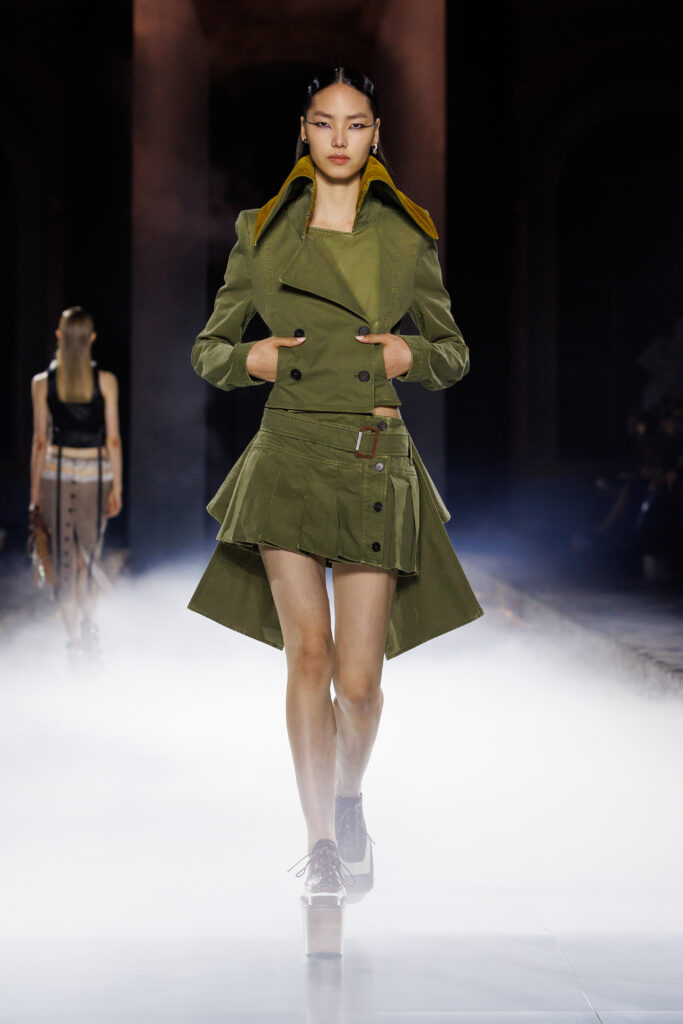













All eyes were on the McQueen show at Paris Fashion Week. Primarily because it was Seán McGirr’s second show as McQueen’s Creative Director following Sarah Burton’s departure in 2023, but also because the young Irish designer unveiled the Spring/Summer womenswear collection with a star-studded audience, which included Cardi B, Salma Hayek, and Lucky Love.

The show took place at the École Nationale Supérieure des Beaux-Arts in Paris. It featured a metallic runway emerging from crushed tiles with fog and an installation by theatre designer Tom Scutt. The interior elements collaborated to tell a story of tension and dualities – specifically, the juxtaposition between dusk and dawn in the city through a gothic lens. Aside from the theatrical elements, the show had a deeper meaning. It aesthetically referenced Irish folklore, not a house first, but instead a house tradition.
This collection followed in the vein of the FW 1994 collection, where the founder, Lee Alexander McQueen, reconceptualised the Celtic figure of the banshee, a female spirit that foretells the death of a family member with a scream. While McGirr still paid homage to the eerie undertones synonymous with the house’s DNA this time around, the portrayal was done with a mystic twist.

On the catwalk, a multitude of components came together beautifully to bring this mythological character to life—think all-black suits with white frilling, rigid tailoring, vivacious collars, and hand-treated silks. There were dresses embroidered with original banshee artwork, which looked like hand-shredded silks and tulle. Jewellery consisted of replicas of hairbrushes and combs. Meanwhile, the shoes took various forms, such as exaggerated thick platforms on lace-ups and upturned toes in boots.

Although the banshee motif symbolises the history of McQueen, it also holds personal meaning for McGirr. In the show notes, McGirr describes the symbol as “something I remember my mother talking about in Ireland, describing the cry of this solitary, foreboding figure. For me, she has come to represent something real and potent now—the idea of someone who is feeling and forthright, someone who can be seen as a guiding force.”
Across the garments, the traditions of British suiting were present, with sharp and twisted cuts. Simultaneously, wool tailoring with lightweight wool mohair is woven in navy, black, and ivory from British mills. Wherever sharpness is found, light is served with translucent white silk chiffon. The star of the show was the intricate hand-stitched cobweb lace housed within silk, which gave the illusion of coming undone (ever so gracefully).

Aside from the garments referencing British techniques, a tracklist of British artists echoed through the runway as the models sauntered. Spanning decades and genres were underground, explorative, and experimental tunes by Florence Sinclair and Andy Stott, making this collection truly a classic on multiple levels.

